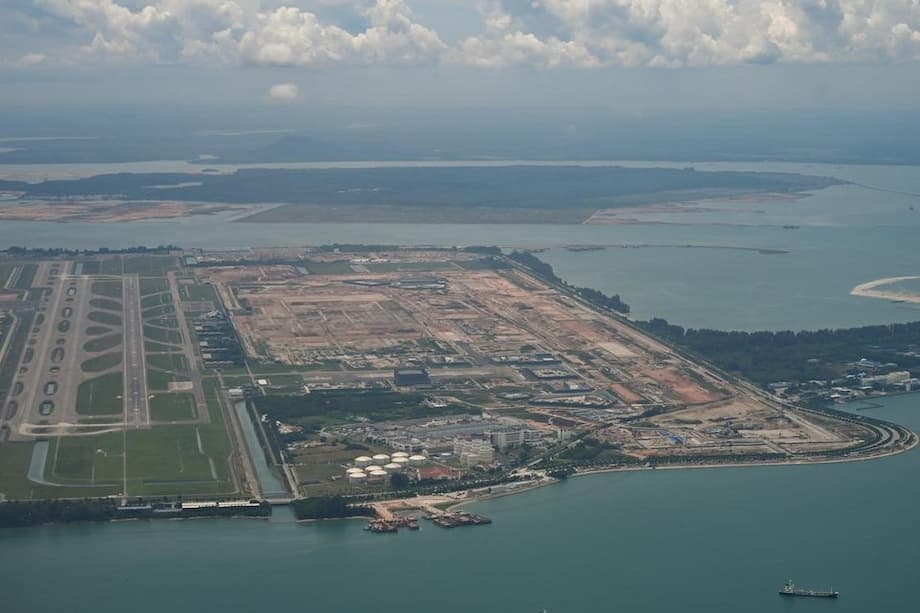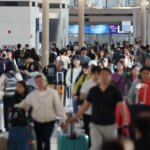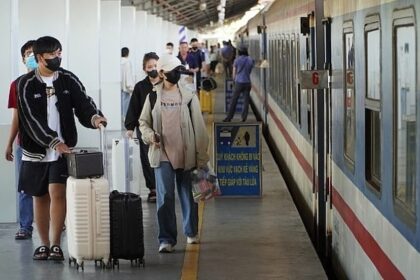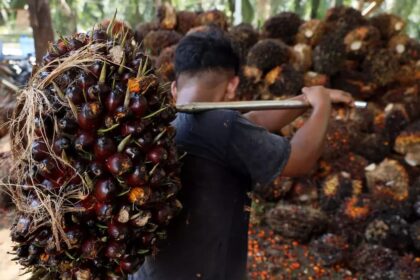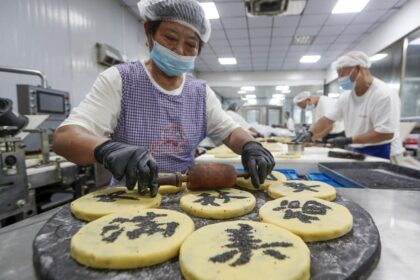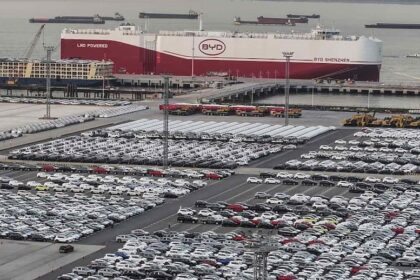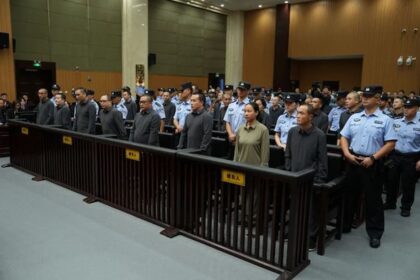Singapore’s Next Big Leap: The Changi East Urban District Vision
Singapore is embarking on one of its most ambitious urban and aviation projects to date: the creation of the Changi East Urban District (CEUD), a vibrant business and lifestyle hub adjacent to the upcoming Changi Airport Terminal 5 (T5). This new district, spanning 40 hectares—about the size of 56 football fields—will redefine the eastern edge of Singapore, blending cutting-edge infrastructure, sustainability, and community-centric design. The project is not just about expanding airport capacity, but about shaping the future of how people live, work, and play in a globally connected city.
- Singapore’s Next Big Leap: The Changi East Urban District Vision
- What Is the Changi East Urban District?
- Terminal 5: The Catalyst for Transformation
- Designing a District for the Future: Urban Planning and Sustainability
- Economic Impact: A New Engine for Growth
- What Will the Changi East Urban District Offer?
- Innovative Urban Design: Blending Nature, Technology, and Community
- Challenges and Considerations
- Broader Implications: Shaping Singapore’s Future
- In Summary
With the Asia-Pacific region poised for explosive air travel growth, Singapore’s Changi Airport is preparing to double down on its status as a world-class aviation hub. The CEUD is a cornerstone of this vision, promising to attract international visitors, local residents, and businesses alike, while supporting Singapore’s broader economic and sustainability goals.
What Is the Changi East Urban District?
The Changi East Urban District is a key component of the larger Changi East development, which also includes the massive Terminal 5 and the Changi East Industrial Zone. The district will be strategically located between the new T5 and the Tanah Merah Ferry Terminal, leveraging its proximity to both air and sea transport links. The goal is to create a unique destination that seamlessly integrates business, leisure, and community spaces, setting a new benchmark for urban districts in Singapore and beyond.
According to the Ministry of Transport and the Civil Aviation Authority of Singapore (CAAS), the CEUD is envisioned as a place that “integrates work and play, reaps synergies with the region, and distinguishes itself from other places in Singapore.” The district will complement the airport’s operations, support the surrounding Changi region, and serve as a magnet for talent, investment, and innovation.
Key Features and Ambitions
The CEUD is not just another commercial precinct. Its planners aim to:
- Encourage community building and a strong sense of identity
- Promote sustainable, car-lite urban mobility
- Integrate green corridors and public spaces
- Leverage advanced technology and automation
- Align with Singapore’s national goal of net-zero carbon emissions by 2050
To bring this vision to life, Singapore authorities have called for multi-disciplinary teams to conduct demand studies and develop a comprehensive concept plan. The appointed consultants will work closely with government agencies, stakeholders, and the public to ensure the district meets the needs of future generations.
Terminal 5: The Catalyst for Transformation
At the heart of the Changi East development is Terminal 5, a mega-terminal set to open in the mid-2030s. Once operational, T5 will boost Changi Airport’s annual passenger capacity from 90 million to 140 million—a staggering 55 percent increase. This expansion is crucial as Asia-Pacific air travel is projected to double by the 2040s, and Singapore aims to remain a leading global aviation hub.
Terminal 5’s design, led by renowned firms KPF, Heatherwick Studio, and architects61, is inspired by Singapore’s unique blend of city and garden. The terminal will feature overlapping curved roofs, lush landscaping, and abundant natural light, creating a welcoming and human-scale environment. Advanced automation, contactless systems, and intuitive wayfinding will ensure a seamless passenger experience, while sustainability is at the core of the design. T5 will be a Green Mark Platinum Super Low Energy building, powered by clean energy and equipped with innovative building management systems. Its rooftop solar panels alone could generate enough electricity to power 20,000 four-room HDB flats for a year.
Prime Minister Lawrence Wong, at the groundbreaking ceremony, emphasized the strategic importance of T5 and the broader Changi East project:
“Singapore cannot be complacent about its achievements and must continue to work hard to remain connected to the world. The development of T5 is a bold move to ensure Singapore’s air hub stays competitive.”
With three runways, a new control tower, and a ground transportation centre integrating MRT lines, buses, and taxis, T5 will anchor the CEUD and set the stage for the district’s growth.
Designing a District for the Future: Urban Planning and Sustainability
The CEUD is being planned with a strong emphasis on sustainability, resilience, and future-readiness. The district will incorporate green corridors, public parks, and waterfront promenades, offering both active and quiet outdoor spaces. Planners are exploring car-lite measures, such as pedestrian-friendly streets, cycling paths, and seamless connections to public transport, to reduce reliance on private vehicles and lower carbon emissions.
Singapore’s Urban Redevelopment Authority (URA) highlights the importance of integrating work, living, leisure, and learning in the Changi region. The CEUD will be closely linked to Changi Business Park, Changi General Hospital, Singapore Expo, and educational institutions, creating a dynamic ecosystem that supports high-value industries, research, and innovation.
Experts suggest that the district could set itself apart by focusing on net-zero carbon initiatives, renewable energy, and AI-powered energy management. Automated processes will optimize energy use, while the design will make use of underground spaces where feasible, further enhancing sustainability and land efficiency.
To future-proof the district, planners are required to forecast demand up to the mid-2050s, analyze long-term user trends, and conduct financial studies to ensure the feasibility and benefits of each proposed development.
Resilience Against Climate Change
Given Singapore’s vulnerability to rising sea levels and extreme weather, the Changi East development—including the CEUD—has been engineered for resilience. The airfield and key infrastructure are elevated 5.5 meters above sea level, and advanced drainage systems are in place to manage stormwater and mitigate flood risks. These measures ensure that the district remains safe and operational even in the face of climate change.
Economic Impact: A New Engine for Growth
The CEUD is expected to be a major driver of economic growth, both for the Changi region and Singapore as a whole. By creating a vibrant live-work-play environment, the district will attract businesses, talent, and investment from around the world. The adjacent Changi East Industrial Zone (CEIZ) will further strengthen Singapore’s position as a leading air cargo and logistics hub, with expanded facilities capable of handling up to 5.4 million tonnes of cargo annually.
According to JLL, a global real estate services firm, the Changi East development will spur demand for high-specification logistics and warehouse space, particularly for specialized, time-sensitive cargo such as pharmaceuticals and perishables. The planned Airport Logistics Park of Singapore 2 (ALPS2), a Free Trade Zone, will enable logistics providers to establish regional distribution centers and enhance Singapore’s competitiveness in global supply chains.
There will also be significant spillover benefits for other parts of Singapore, such as Seletar Aerospace Park and Changi Business Park, which could become hubs for aviation-related research, artificial intelligence, and robotics technology.
What Will the Changi East Urban District Offer?
The CEUD is envisioned as a destination that appeals to a diverse range of users—business travelers, tourists, local residents, and the broader community. Some of the proposed features and amenities include:
- An aviation business campus and offices for firms needing airport access
- Exhibition and convention centers
- Premium transit hotels and wellness-themed resorts
- Beachfront residences and seafront promenades
- Experiential retail with themed stores and cultural venues
- Active and quiet outdoor areas for recreation and relaxation
- Integrated transport hubs with seamless connections to MRT, buses, and ferries
The district’s unique waterfront location offers opportunities for innovative retail, lifestyle, and leisure experiences, making it a potential attraction for both tourists and locals. The integration of wellness businesses, recreational spaces, and cultural venues will create a stress-free, enriching environment for all.
Connectivity: Linking Air, Sea, and Land
One of the CEUD’s key advantages is its unparalleled connectivity. The district will be served by new MRT stations, enhanced road networks, and cycling paths, making it easily accessible from the city and other regions. The proximity to the Tanah Merah Ferry Terminal opens up possibilities for air-sea transfers, further enhancing Singapore’s status as a global transport hub.
Terminal 5 will feature a ground transportation centre that brings together the Thomson-East Coast and Cross Island MRT lines, buses, taxis, and other services. Most passengers arriving at T5 will be able to reach a taxi or MRT within 30 minutes of landing, while transfer passengers can connect to another flight in less than an hour. These improvements will make travel to and from the CEUD fast, convenient, and efficient.
Innovative Urban Design: Blending Nature, Technology, and Community
The architectural and urban design of the CEUD will reflect Singapore’s reputation as a “City in a Garden.” The district will feature lush landscaping, vertical gardens, and green roofs, creating a harmonious blend of nature and urban life. Public spaces will be designed to foster community interaction, with plazas, parks, and waterfront promenades offering venues for events, recreation, and relaxation.
Technology will play a central role in the district’s operations. State-of-the-art systems will manage energy use, security, and transportation, while automation and AI will enhance efficiency and user experience. Contactless check-ins, baggage-handling robots, and biometric border clearance will streamline processes and reduce waiting times.
Wayfinding will be intuitive, with clear signage and digital guides helping visitors navigate the district. The integration of art, culture, and local heritage will give the CEUD a distinct identity, making it a place where people feel a sense of belonging.
Challenges and Considerations
While the vision for the CEUD is bold and inspiring, there are challenges to be addressed. Forecasting demand and user trends up to the mid-2050s requires careful analysis and flexibility, especially given the rapid pace of technological change and evolving travel patterns. Ensuring financial feasibility and balancing the needs of diverse stakeholders will be critical to the project’s success.
There is also the challenge of integrating the district seamlessly with existing infrastructure, minimizing environmental impact, and maintaining resilience against climate risks. The planners’ commitment to sustainability, innovation, and community engagement will be key to overcoming these hurdles.
Broader Implications: Shaping Singapore’s Future
The Changi East Urban District is more than just a new precinct—it is a statement of Singapore’s ambition and adaptability in a rapidly changing world. By investing in future-ready infrastructure, sustainable urban design, and global connectivity, Singapore is positioning itself to thrive in the decades ahead.
The CEUD will serve as a model for how cities can integrate transportation, business, lifestyle, and community in a way that is both economically vibrant and environmentally responsible. As air travel rebounds and new opportunities emerge in logistics, technology, and tourism, the district will play a pivotal role in Singapore’s continued success as a global city.
In Summary
- The Changi East Urban District is a 40-hectare business and lifestyle hub being developed next to Changi Airport Terminal 5.
- It aims to integrate work, play, and community, supporting Singapore’s role as a leading global aviation and logistics hub.
- Terminal 5 will boost Changi Airport’s capacity to 140 million passengers annually, with state-of-the-art design and sustainability features.
- The district will emphasize sustainability, resilience, and car-lite mobility, aligning with Singapore’s net-zero carbon goals.
- Economic benefits include new opportunities in logistics, technology, and tourism, with spillover effects for the broader region.
- Innovative urban design will blend nature, technology, and community, creating a unique destination for locals and visitors.
- Challenges include forecasting demand, ensuring financial feasibility, and integrating with existing infrastructure.
- The CEUD represents Singapore’s commitment to future-ready, sustainable urban development and global connectivity.


